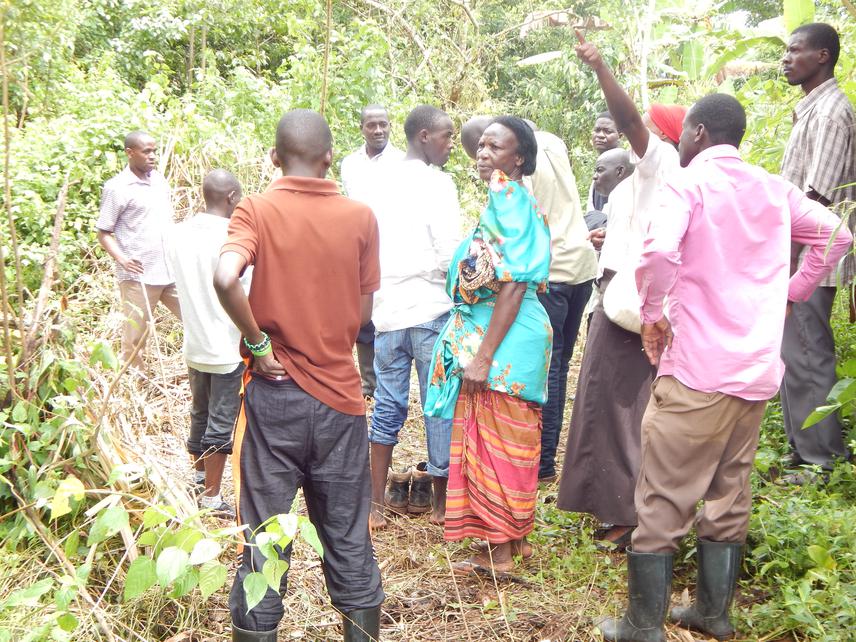Raymond Katebaka
Other projects
18 Feb 2009
Understanding the Impact of Forest Fragmentation on Forest Hornbills of Uganda
2 May 2012
Enhancing Community Participation to Conserve Fragmented Forests in Central Uganda
29 Jan 2014
Promoting Collaborative Forest Management in Degraded Forests of Central Uganda
The project aims to address factors that have exacerbated human-forest conflicts resulting from imprecise delineation of boundaries and has reduced forest-related benefits to local communities through CFM. CFM is a powerful tool that promotes economic growth and eradicate poverty.

Community representatives at Mpanga CFR proposed CFM land.
In a push to increasing attention to natural resource conservation, Collaborative Forest Management (CFM) tools have exhibited evidence-based approaches to improving benefits from conservation. African Union of Conservationists (AUC) project with the support from RSG, aims for better engagement of communities’ adjacent protected forests for conservation and promotion of best management practices. The project provides unique and important contributions to society’s understanding of the relationships between their work and nature and to improving conservation practice and outcomes. The project takes advantage of opportunities to use and integrate new tools that allow the project communities to remain well-informed of the complex array of drivers causing forest loss in central Uganda. It will promote programmatic community investments aimed at transformational change in breaking the poverty cycle and other sectors affecting forests. The poverty cycle will be transformed by activities that promote income generation and they include;
• The extraction and harvest of various forest resources that can be sold to urban populations such as Masaka, Mpigi towns and Kampala city.
• Multifaceted activities such as bee’s taxa that is highly threatened by the continuous forest degradation central Uganda. This eventuates into conservation of bees that enhances bee-keeping activities in the project area as part of livelihood option approach. Under agroforestry activities, each site i.e. Mpanga, Ngangu and Kasonke (CFRs) will have a minimum of 50 beehives. Each beehive e.g. Kenya top bar type generates about 20 litres of honey per year. A litre of honey costs about USD$2.82 indicating a total of USD56.34 per each beehive per year. Basing on this income generated per beehive, a total of 150 beehives will create an income of USD$8,451 annually.
This significant infusion is much-needed capital and will provide considerable conservation interests and other environmental investments to accelerate the efforts of local social sector among communities working to address key priorities throughout the central region, such as education and environmental management and access to ecosystem services, environmental healthy for food security, affordable energy conservation, clean water, local job creation among others. Finally there will be a designed biodiversity conservation community methods to use in forest monitoring.